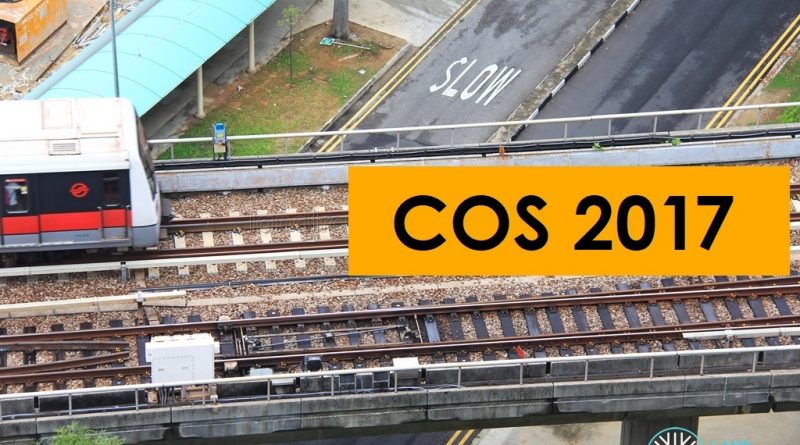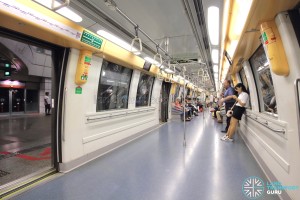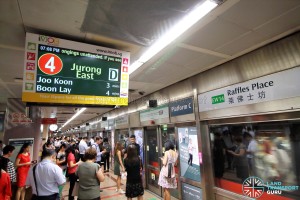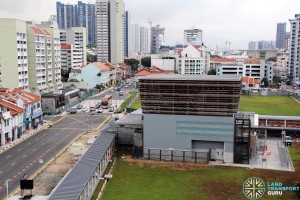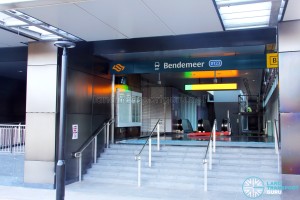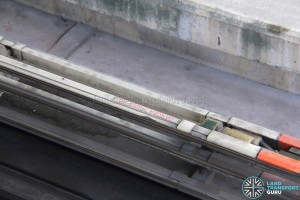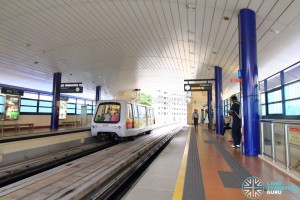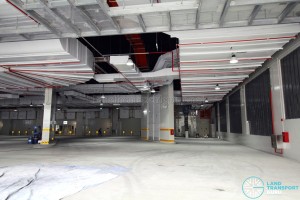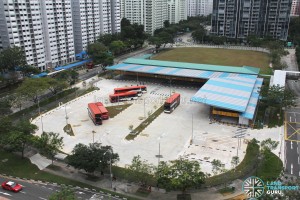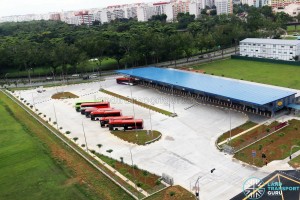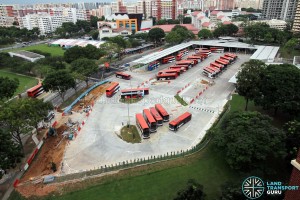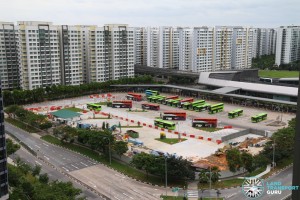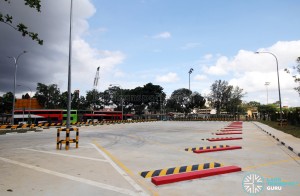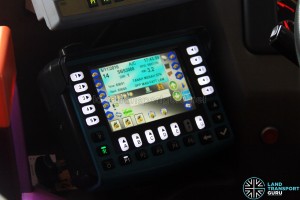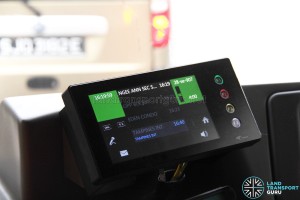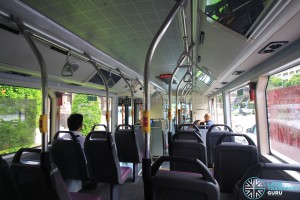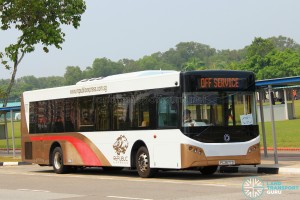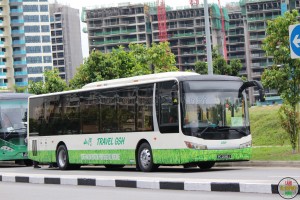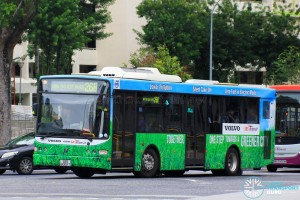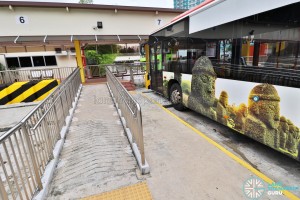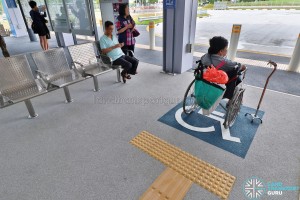At the Ministry of Transport’s (MOT) Committee of Supply (COS) Debate 2017 on 8 March 2017, new plans and measures for the future were unveiled. We summarise the latest Public Transport offerings as highlighted in this year’s COS Debate.
The Rail Industry
Raising Rail Reliability
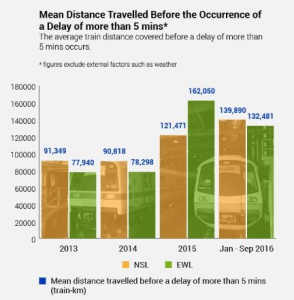
Transport Minister Mr Khaw Boon Wan set a new target for MRT reliability this year, at 300,000 train-kilometres. This means that trains should travel an average of 300,000 kilometres before a major disruption occurs. If achieved, this would mean a 72 percent improvement over the 174,000 train-kilometres clocked in The year 2016.
Rail reliability is tracked with a key indicator called the Mean Kilometres Between Failure, MKBF (also known as Mean Distance Between Failure, MDBF). From 130,000 train-km in 2015, the figure has crossed 160,000 train-km in the first half of 2016, and further improved to 192,000 train-km in the second half. The target for 2017 has been set for 300,000 train-km, and 400,000 train-km by 2018.
However, these figures are still shy of other metro systems. In 2015, the MKBF for the Hong Kong MTR was more than 500,000 train-km, and 800,000 train-km for the Taipei Metro. The Minister also warned of potential hiccups when the North-South Line switches over to the new signalling system this year, as was the experience with other metro systems.
Also check out: SMRT Rail Performance Data
Ongoing Works
Ongoing works were also elaborated on at the COS Debate.
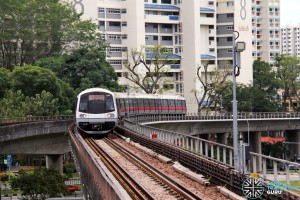
Testing of the new signalling system utilising Communications-based train control (CBTC) is being conducted on the North-South and East-West Lines (NSEWL), which will allow trains to run at shorter intervals of 100 seconds, instead of 120 seconds currently. The NSL will switch over to the new signalling system this year, followed by the EWL in 2018.
For the North East Line, the LTA is working with SBS Transit to refurbish and upgrade their first-generation C751A trains. First indicated in the Budget 2013, the project is still ongoing, with the addition of overhead handrails and the conversion of seats to standing areas already in place.
In response to numerous glitches along the East-West Line between Jurong East and Joo Koon, the Minister elaborated that the very old signalling components along the stretch require replacement, but limited engineering hours has affected progress, and various means of extending the engineering hours are being considered by SMRT and LTA, such as ending train services earlier, as was previously done during the sleeper replacement project. The replacement of the power-supplying third-rail system will also be completed this year.
Future Works
The 21-kilometre Downtown Line Stage 3 between Fort Canning and Expo is also on track to opening later this year, opening up a new corridor in the East of Singapore and linking up with the rest of the Downtown Line.
As an indication that the Downtown Line 2 was well-embraced by commuters, a recent study found that one out of six rides on the Downtown Line were made using new EZ-Link cards, suggesting that more commuters have switched to public transport. When in full operation, the entire Downtown Line will serve a daily ridership of more than half a million commuters. In response to Mayor Low Yen Ling’s concerns, Minister Khaw committed to opening Hume MRT Station as soon as the pace of development can meet ridership justification.
The rail network will be expanded to 360 kilometres by 2030. Projects in the pipeline include the Tuas West Extension, Downtown Line 3 (DTL3), Thomson-East Coast Line (TEL), Circle Line (CCL) Stage 6, Jurong Region Line (JRL) and Cross Island Line (CRL). By 2030, 8 in 10 households will be within a 10-minute walk of an MRT station.
Procurement of New Systems
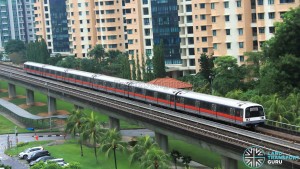
With the transition of SMRT Trains to the New Rail Financing Framework (NRFF) the year before, the Government took ownership of SMRT’s rail assets and the company was delisted to allow it to focus on its core responsibilities of being a public transport provider. The restructuring allows the Government to replace and upgrade ageing assets more promptly.
Mr Khaw mentioned that a power supply system overhaul for the NSEWL is in store, which has been in use since 1987 when both lines opened, incorporating new components and the latest technology. 66 new trains for the NSEWL will replace the first-generation C151 trains. Tenders would be called for both projects in the near future.
Leveraging on New Technologies
Condition monitoring instruments will be installed on the new power system and trains for the NSEWL. This is part of the industry’s effort to leverage on Big Data and Analytics to improve train reliability. As heating is often a leading indicator of critical asset failure, the new power system will have features that enable real-time reading of the switchgear panel’s temperature.
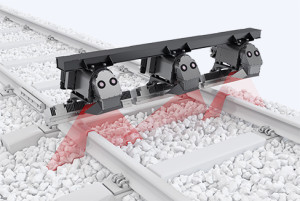
A new-generation Automatic Track Inspection System for the Downtown Line is in store. Imaging sensors and lasers will be installed on four revenue trains for a start, and these will scan the tracks of the entire Downtown Line to detect anomalies so that any faults can be arrested early. Such data will improve the maintenance of the train system. Currently, four train cars on the Bukit Panjang LRT already have cameras on the undercarriage to monitor the interface between trains and rail.
The rail industry is also adopting a more proactive, predictive approach to maintenance, and away from the current model of preventive maintenance. To enable this transition, an Enterprise Asset Management System (EAMS) will be developed to consolidate and integrate asset information distributed across all rail lines into a single system. This will enable LTA and Operators to develop trend analysis and prediction on faults, and enhance their capabilities to detect faults early so that maintenance and renewal works can be better planned and prioritised.
For an enhanced response to public transport incidents and emergencies, LTA is developing a Fusion AnalyticS for public Transport Emergency Response (FASTER) system which will combine data from various sources, including fare-card, video and telecommunications systems, to perform analytics. It will enable LTA and Public Transport Operators to visualise commuting patterns to help improve transport planning, and also triggers early alerts of crowd surges and transport incidents. The FASTER system will also be able to predict the impact of the incident in terms of the extent of the travel delay, the number of commuters affected, and recommend specific mitigating measures such as the injection of additional trains and buses.
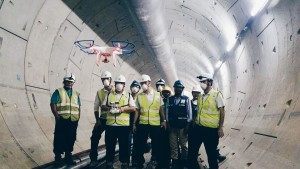
In addition, automation technology is being explored to help workers with the labour-intensive job of inspecting the rails, which is only carried out in a few short hours outside of train service hours. The LTA recently issued a request for information (RFI) on using drones and unmanned vehicles (UVs) to inspect road and rail tunnels in March 2017. which will involve 360-degree video mapping and the use of software to detect the location of defects. (Link to LTA Facebook Post)
Bukit Panjang LRT Overhaul
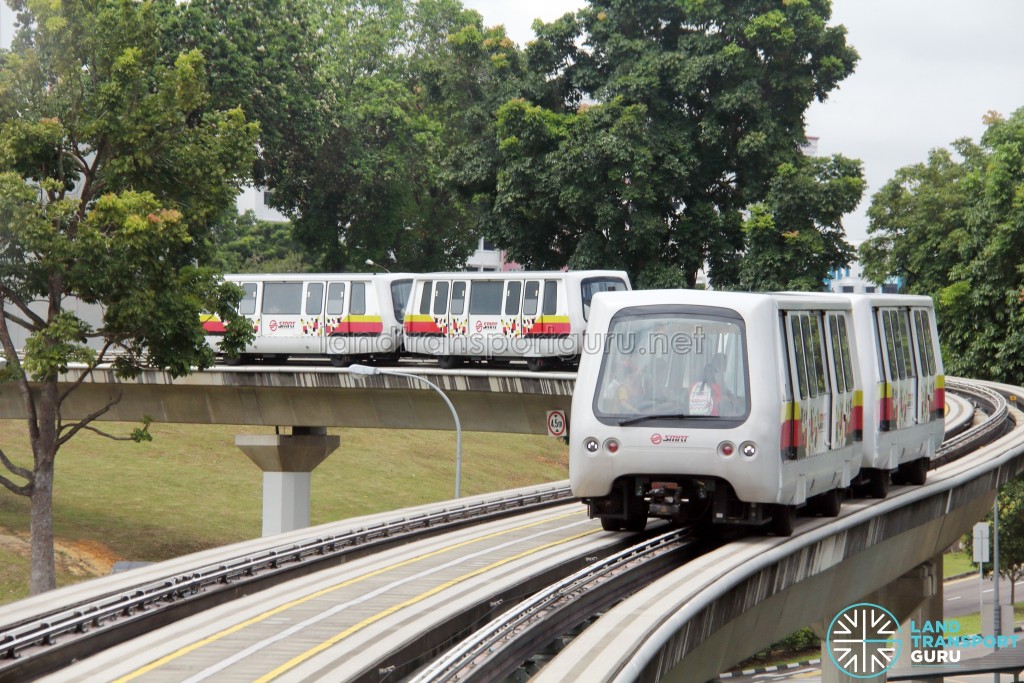
An overhaul of the Bukit Panjang Light Rail Transit (BPLRT) Line has been planned, including new trains, power rails, signalling system and various other critical components. Minister Khaw has set a target of this year for a tender to be called for the complete replacement of the BPLRT’s ageing components and an upgrade of its systems.
Details on the renewal process have yet to be disclosed by the LTA, which only commented that it would be “a complex project” performed on a live and running system.
Ever since its opening in 1999, the reliability of the BPLRT has been “unsatisfactory” in the words of Mr Khaw, despite efforts by the LTA, SMRT and the train manufacturer, Bombardier, over many years to improve it. By “shoe-horning” the LRT system into a built-up town, the LRT has to make sharp bends and over undulating terrain, worsening the problem of misalignment between the power rail and the trains’ collector shoes which were responsible for 60% of major disruptions over the past three years.
Plans to fix the glitch-ridden system were first revealed last October in a blog post by Mr Lee Ling Wee, managing director of operator SMRT Trains. Three options were laid out, namely: (1) to deploy self-powered, autonomous guided vehicles on the existing viaduct, (2) to build a new LRT system with significant design enhancements, or (3) upgrading the signalling system to deploy more trains at closer intervals, but retaining the current Bombardier guideway system.
Should all 3 options be unfeasible, the last alternative would be to scrap the system and revert to buses. However, that option was dismissed, as the road network in Bukit Panjang would not be able to cope with the increased congestion.
With the 20-year design lifespan of the BPLRT fast approaching, the complete overhaul is a sensible move, but the future of the new C801A LRT trainsets have been called into question. Introduced in November 2014 and still in good working condition, it would be a waste if these trains are discarded, in the likely scenario that they will be incompatible with the new system. The revamp could see a re-design of the Bukit Panjang Station, its track layout and the service routeing so that the trains do not have to constantly switch tracks, as the switch point is described as a ‘critical vulnerability’. At the same time, works to refit all BPLRT stations with fixed platform barriers is in progress, and it remains to be seen if the new system will be compatible with these barriers.
The overhaul of LRT systems is not unheard of. In the early 2000s, the Changi Airport Skytrain was refitted from the AdTranz/Bombardier system (similar to the BPLRT) to the Crystal Mover system (similar to the Punggol LRT and Sengkang LRT) prior to the opening of Terminal 3. A similarly challenging undertaking on the Taipei Metro Brown Line involved the tackling of many obstacles in converting the two-car system into a four-car system.
- Eye on the Future: Options for replacing or renewing the BPLRT system – SMRT Blog
- Scrapping Bukit Panjang LRT not feasible: Khaw – Straits Times
- Parliament: Bukit Panjang LRT to get complete overhaul and upgrading – Straits Times
The Bus Industry
Improving Public Bus Services
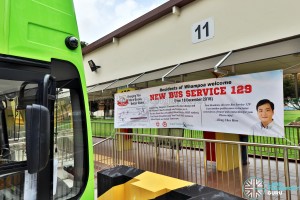
The Bus Industry is also undergoing significant change. Under the Bus Service Enhancement Programme (BSEP), over 850 buses have since been injected, and 70 new or amended routes have been introduced. Rolling over to the Bus Contracting Model (BCM), the LTA has taken over bus assets and infrastructure from existing operators. However, Minister Khaw also appealed to Members of Parliament (MPs) that bus service provision requires a minimum ridership for financial prudence, and existing bus services will be amended or withdrawn if demand falls to below sustainable levels.
Meanwhile, bus infrastructure has expanded in tandem with the larger bus fleet. Three new bus interchanges have been constructed (Bukit Panjang Bus Interchange, Compassvale Bus Interchange and Tampines Concourse Bus Interchange), and more parking lots have been added to existing interchanges (Hougang Central Bus Interchange, Punggol Bus Interchange and Upper East Coast Bus Terminal). With Bukit Panjang opening later this year and Yishun Bus Interchange expected to be ready by 2019, there will be a total of 10 Integrated Transport Hubs (ITH) in Singapore by 2019.
To improve bus arrival regularity and reduce bunching, the LTA has set fair but ambitious standards in the form of the Bus Service Reliability Framework (BSRF) trial, which was subsequently expanded to all bus services with the full transition to the BCM. As bus captains are work closely with their service controllers to manage bus arrivals real-time, Minister Khaw added that some buses on certain routes have to drive very slowly to arrive punctually as scheduled because road conditions can vary during the day, and that is the only way to solve the bunching problem.
Common Fleet Management System (CFMS)
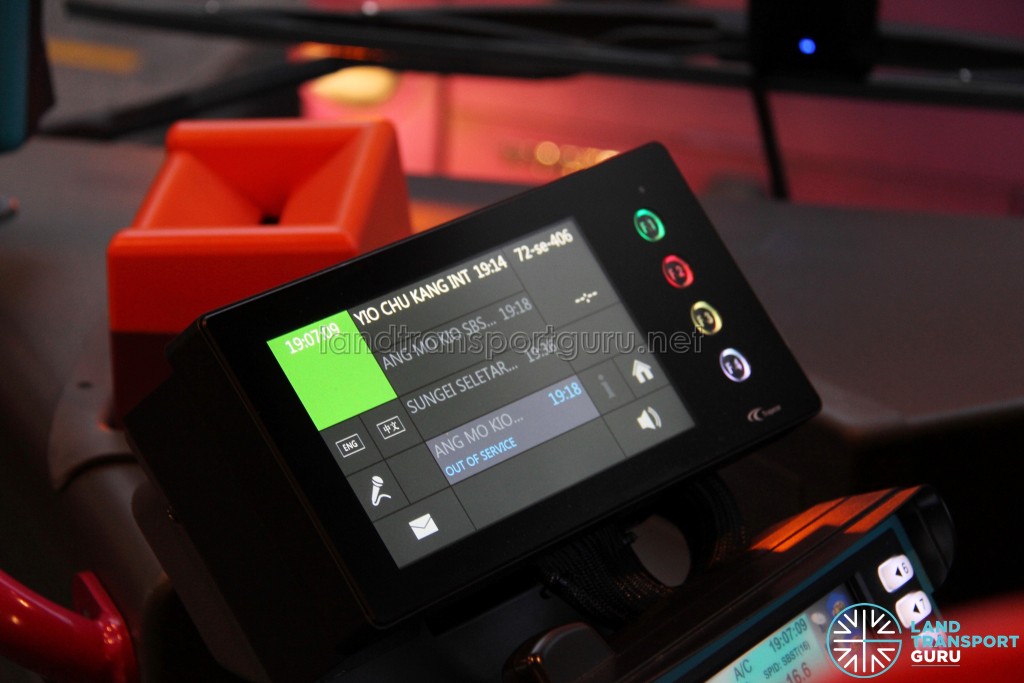
Commuters and operators are benefitting from bus systems upgrades initiated by the LTA. The New On-Board Bus Equipment (NOBE) and associated data transmitters installed in 2014 provide commuters with real-time data on bus arrival times and the loading situation.
In addition, the Common Fleet Management System (CFMS) enables operators to monitor the location and performance of their bus fleets, and actively work with their bus captains to adjust bus operations in real-time. It has been rolled out in phases since April 2016, and the network-wide installation will be completed by March 2017. The CFMS provides live updates on bus locations, traffic accidents, arrival times, etc, makes our bus operations more efficient, and enables the bus operators to improve bus arrival regularity under the Bus Service Reliability Framework.
For detailed information about the CFMS, check out the detailed article here.
Greener Buses for Singapore
By procuring buses which meet the stringent Euro V emission standards, the Government has already been greening most of Singapore’s diesel-powered transit buses, with most buses in Singapore currently achieving the Euro IV and Euro V standards through Selective Catalytic Reduction (SCR) and Exhaust Gas Recirculation (EGR). However, no emissions are better than low emissions, and the Government is taking the first step to adding more hybrid and electric models to the public bus fleet.
As announced by Second Minister for Transport Ng Chee Meng, the LTA will be calling tenders this year for the purchase of 50 hybrid buses and 60 electric buses. This will allow the LTA to expand its trial of such “green” vehicles, which while environmentally-friendly, are more costly and less suitable for the island’s tropical climate. Not only do vehicles operating here consume a lot of energy for air-conditioning, their batteries and hybrid systems work less efficiently in our warm and humid environment.
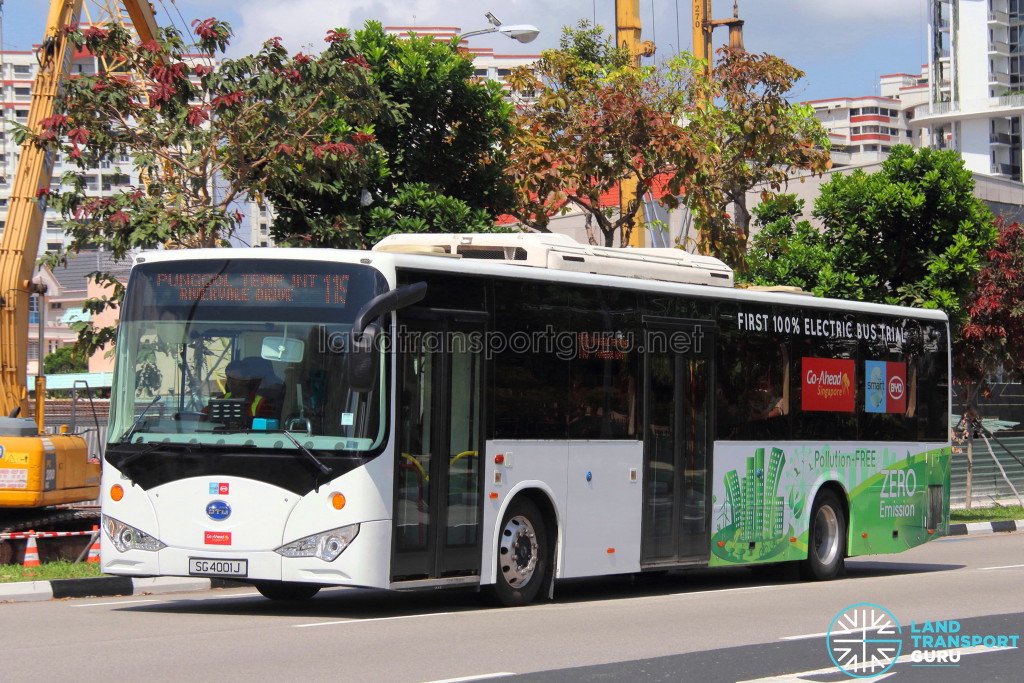
Currently, the LTA is trialling a fully-electric bus with operator Go-Ahead Singapore, first on Bus Service 17 and now Bus Service 119. Initial feedback on the Chinese-made BYD K9 bus has been encouraging, with commuters enjoying the quieter ride and the bus being fairly reliable. The LTA is also looking to have three bus services which are fully served by electric buses. This will help the LTA gain a deeper understanding of the operational challenges that come with the wider deployment of such buses under local tropical weather and traffic conditions. Experience gained from these trials will be used to calibrate the LTA’s approach to adopting alternative energy buses.
Hybrid transit buses have previously been on trial locally as well. Between 2010 and 2012, SBS Transit trialled two Sunlong SLK6121UF14H buses (SBS8000Z and SBS8001X), and SMRT Buses trialled a Zhongtong LCK6121G HEV bus (SMB137A) in 2011. The trials were a failure and all three buses were sold to private operators Republic Express, dnata Singapore and Travel GSH respectively.
In 2015 and 2016, across two separate six-month trial periods, SBS Transit trialled a Volvo B5RLE Hybrid bus (SBS8002T) independent of Government funding, to test the performance of Volvo diesel hybrid buses in tropical climates like Singapore. The bus was returned to the manufacturer after the trial.
In addition to diesel-hybrid and fully-electric buses, Singapore’s first hydrogen-electric bus was a product of a joint research project between Nanyang Technological University (NTU) and Beijing’s Tsinghua University, relying on fuel cell technology and hydrogen as fuel. Launched in 2010, the Higer KLQ6129GQH2 bus (RD6066L) ferried commuters during the Youth Olympic Games. As hydrogen fuel was prohibitively expensive, plans were made to convert it into a full-electric bus in 2011 but never materialised. The bus was neglected in NTU until it was removed in 2015.
Accessibility & Inclusiveness
Second Minister for Transport Ng Chee Meng explained that Public Transport must be designed thoughtfully to serve the needs of vulnerable groups, such as: People with disabilities; Families, especially those with young children; and An ageing population which is likely to be less mobile.
100% Barrier-Free by 2020
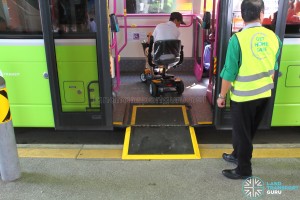
Singapore’s progress towards fully barrier-free public transport is almost complete. All MRT stations and bus interchanges are now barrier-free, and 92% of public buses are wheelchair-accessible. This will increase to 98% by the end of 2018, and 100% by 2020. This will be achieved through the gradual phasing out of older non-wheelchair-accessible buses.
To improve pedestrian accessibility, lifts are progressively being installed on pedestrian overhead bridges over the last three years. 23 bridges have been completed so far, and another 24 are due for completion by end-2018. However, lifts are expensive—they cost $4 million per pair to build, and $40,000 a year to maintain—and the crossing is longer be barrier-free if either lift is shut down for maintenance. At-grade pedestrian crossings employing the Green Man Plus programme (extended green light timing) have been suggested for areas where safety is not an issue and the impact on traffic not excessive.
The Silver Zone programme has made streets safer for the elderly and the less mobile. Feedback on the current 9 Silver Zones have been positive, and the LTA is looking to expand it to another 41 locations island-wide. Before building Silver Zones, LTA works closely with grassroots leaders to ensure that the design and safety features meet the needs of the residents. As part of the public education process, LTA distributes posters and brochures, and also makes use of community events to address residents’ concerns face-to-face.
In previous years, LTA has modified all existing bus interchanges and terminals to be wheelchair-accessible. One notable example is Saint Michael’s Bus Terminal, where extensive modification works were performed to fit every end-on berth with a wheelchair ramp. At new bus interchanges, a priority boarding area is marked out at every berth, with priority seats for the disabled and a dedicated wheelchair waiting area.
Open Strollers allowed on Buses
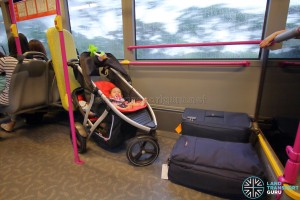
From 2nd April 2017, families with children will be allowed take open strollers onboard all public buses without having to fold them. The move is in response to feedback from parents and caregivers and a step towards a more inclusive public transport system. Mr Ng Chee Meng also advised parents to be fully attentive and take responsibility for the safety of their children, holding on tight to the open strollers at all times.
Currently, open strollers are not permitted on public buses as they pose a safety risk to the child and other commuters if the bus brakes sharply or swerves suddenly. Strollers must be folded for boarding, often leaving parents or caregivers struggling to manage with carrying their child and the stroller onboard the bus.
In a set of guidelines released by the LTA (PDF), open strollers are allowed on all public buses, but parents/caregivers are encouraged to bring open strollers onto wheelchair-accessible buses as they are designed for easier boarding and have more space available. On non-wheelchair-accessible buses, parents/caregivers are also encouraged to fold the stroller for the safety of the child. The open stroller should also not be greater than 1.2m long or 70cm wide. Parents/caregivers are responsible for the child’s safety throughout the journey, including boarding and alighting.
Parents/caregivers with open strollers can also board the bus from the rear door, but only when boarding from the front door is not possible due to obstruction. They should inform the Bus Captain first, and make fare payment at the front of the bus. Open strollers must not be placed in the aisle or in any other location that obstructs the entry or exit of passengers, including the upper deck of a double-deck bus. Finally, passengers-in- wheelchairs will be given priority to use the designated wheelchair spaces.
Open strollers to be allowed on public buses – LTA
New Technologies
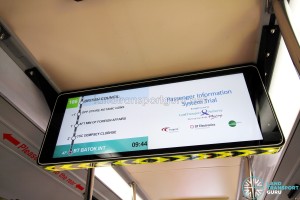
In response to calls for audio announcements on our buses to help passengers with visual disabilities, Second Minister for Transport Ng Chee Meng mentioned that the LTA will begin testing this feature as an enhancement to the new Passenger Information Display System (PIDS) currently being trialled on SMB3053M, a Tower Transit bus deployed on Bus Service 106.
The LTA also plans to collaborate with SG Enable, for SG Enable to ‘adopt’ Redhill MRT station, which caters to members of the disabled community travelling to and from the Enabling Village. Redhill station then can be a test-bed for new mobility technologies and infrastructure designs that can make public transport more accessible for persons with disabilities. The move hopes to co-create solutions with people who are affected, including the Enabling Village community, and apply similar solutions to future projects.
New Jobs in Public Transport Sector
About 8,000 new jobs in the public transport sector are expected by 2030, as mentioned by Senior Minister of State for Transport Josephine Teo in the COS 2017 Debate. Collectively, the industry employs 300,000 people with the strong potential for further growth. The Singapore Rail Academy and Singapore Bus Academy was established to build local capabilities for bus captains and railway engineers; new careers will also be created for data scientists, service controllers, and rail and bus engineers and technicians.
These are on top of 13,000 new jobs in the aviation and maritime industries by 2025, as Singapore continues to expand airport and port operations. The two sectors currently contribute around 10 per cent to Singapore’s GDP and provide nearly 250,000 jobs.
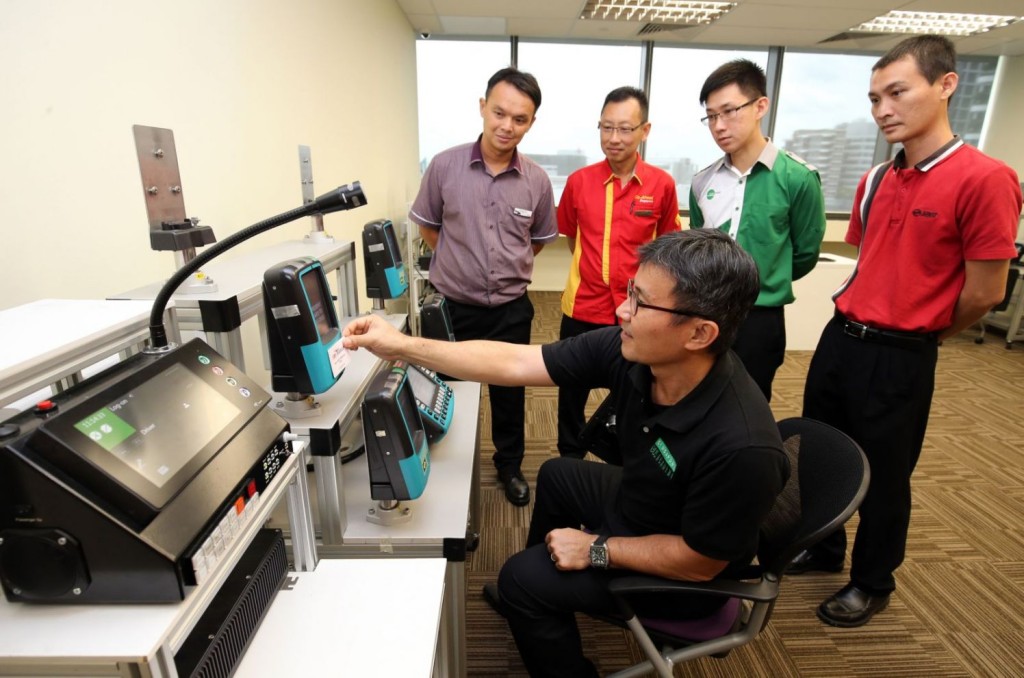
Public Transport Manpower Development
The Land Transport Authority (LTA), SkillsFuture Singapore (SSG) and the public transport operators (PTOs), have jointly developed a series of industry-wide manpower development initiatives to attract, develop and retain talent in the public transport industry. The initiatives include the development of more industry-relevant programmes, sponsorship of study awards and training grants, a skills-based progression framework, as well as an industry-wide branding of the sector.
Under the Public Transport Manpower Development Fund (PTMDF), Public Transport Study Awards are offered to groom and develop our next generation of public transport professionals; Industry Training Grant is provided to encourage industry incumbents’ attendance to relevant short technical training programmes to ensure that skills are constantly upgraded to meet job requirements; Seed Grant and subsidies are offered to support development of industry-relevant programmes and enhancement of specialised training facilities at Institutes of Higher Learning (IHLs).
On top of PTMDF, in line with the SkillsFuture movement to provide individuals with opportunities to develop to their fullest potential, LTA as the sector lead is offering the SkillsFuture Study Awards for the Land Transport Sector to industry incumbents who are committed to deepening their skills in the sector.
In addition to funding incentives, LTA has also set up the Singapore Rail Academy and Singapore Bus Academy to professionalise the public transport workforce through capability development.
Singapore Bus & Rail Academy
The Singapore Bus Academy (SGBA) was launched in October 2016 as a centralised academy to offer enhanced training to all bus professionals. The Academy conducts Standardising Foundational Training for Bus Captains to complement the existing training efforts of individual operators, and other programmes for existing bus professionals to undergo continual training and deepen their skills throughout their careers. Located at the Devan Nair Institute, SGBA is also a dedicated career resource centre for the public bus industry.
As part of Standardising Foundational Training, the Enhanced Vocational Licence Training Programme (EVLTP) for Bus Captains is a five-day course covering foundational topics such as the public transport industry, omnibus driver’s vocational licence and regulations, bus ticketing system (NOBE) and common fleet management systems (CFMS), customer service and safe driving. The course is now a requirement before Bus Captains can obtain their Omnibus Driver’s Vocational Licence (ODVL).
Launched in February 2017, the Singapore Rail Academy (SGRA) at LTA’s Bedok Campus aims to skill, up-skill and re-skill the railway workforce by developing programmes to train workers in critical areas of rail operations and maintenance. It collaborates with its tripartite partners, the Employment and Employability Institute (e2i) and Singapore Institute of Technology (SIT), along with highly-regarded institutions locally and from abroad to build up local rail research capabilities, certify the proficiencies of railway professionals, and promote careers in the rail industry.
- Singapore Bus Academy – LTA
- Launch of Singapore Rail Academy to deepen local rail engineering capabilities – LTA
- Public Transport Manpower Development – LTA
Financial Sustainability
Taxpayers have been increasingly subsidising the higher operating costs of the public transport network, a situation that is not sustainable going forward, explained Transport Minister Mr Khaw Boon Wan as he signalled that transport fares will go up in future.
Although fare revenue now goes directly to the Government, it is far short of covering operating costs, and the Government has to top up the large deficit. It expects to subsidise public bus services by close to S$4 billion over the next five years under the new Bus Contracting Model, where it is responsible for buying and replacing buses, and paying operators a fee to operate these services. Another S$4 billion is expected to go into replacing rail assets under the transition to the New Rail Financing Framework, on top of the S$20 billion it is spending on building new public transport infrastructure.
While the Government is committed to subsidising public transport heavily, a fair balance in the relative burden should be borne by commuters, taxpayers and operators. As such, when the Public Transport Council (PTC) is set to review the fare formula (set to expire after the 2017 fare exercise), Mr Khaw hoped that commuters would be more understanding towards increases in fares.
In the most recent Fare Adjustment which took effect in December 2016, there was an overall 4.2% decrease in bus and train fares owing to lower energy prices. An interactive graph showing the changes in fares over the past few years can also be found in the article.
Related Content:
- Bus Contracting Model (BCM)
- Bus Service Reliability Framework (BSRF)
- Bus industry completes transition to Bus Contracting Model
- Common Fleet Management System (CFMS)
- Go-Ahead Singapore trials BYD Electric Bus
- Passenger Information Display System (PIDS)
- Bukit Panjang LRT
- Public Transport Fare Adjustment 2016
External Links & References:
- Committee of Supply 2017 – MOT
- Open Strollers to be Allowed on Public Buses – LTA
- Factsheet: Leveraging Technologies to Enhance Rail Reliability – LTA
- Factsheet: Leveraging Technology for a Smarter and Greener Transport System – LTA
- Bus Contracting Model Improves Bus Journeys for Commuters – LTA
- Public Transport Manpower Development – LTA
- SMRT Rail Performance Data – SMRT Blog
- Eye on the Future: Options for replacing or renewing the BPLRT system – SMRT Blog
- Committee of Supply – Straits Times
- Need to strike balance in transport cost burden: Khaw Boon Wan – Channel NewsAsia
- Khaw signals that transport fares will go up in future – Today Online
Back to Bus Articles
